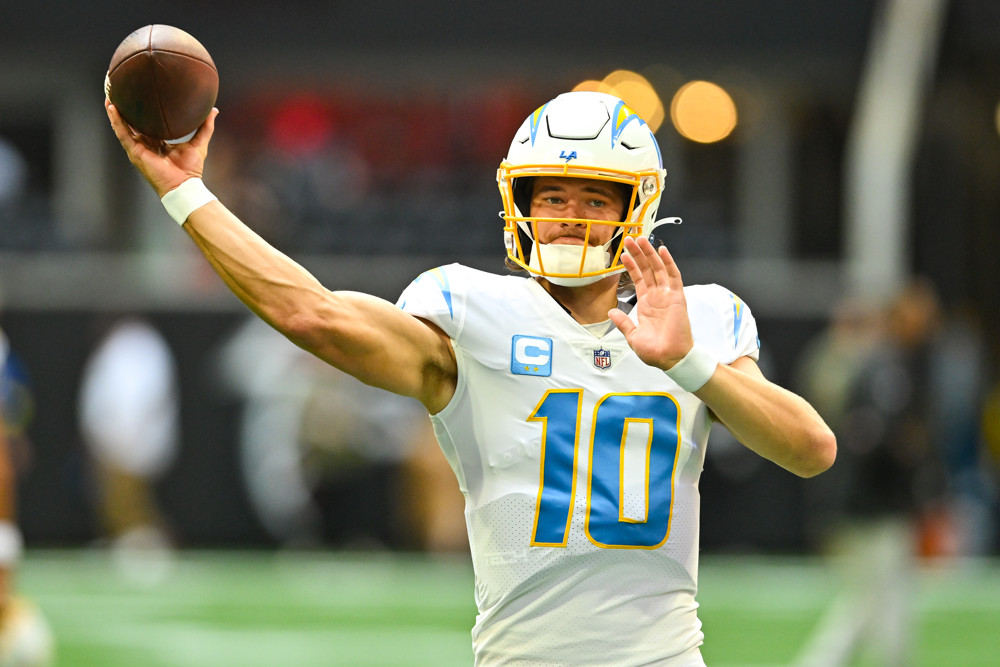Fantasy football draft season is in full swing, and we at ETR have you covered. Your draft strategy hinges on numerous factors, most evidently what pick you have and your league’s scoring settings. However, the size of your league is also a consideration, as optimal drafting is different in an eight-team league vs. a 16-team league. Today, we’ll break down some of those changes and walk through why things change based on the number of teams you’re competing against.
ONESIE POSITIONS
Quarterback and tight end are often referred to as the “onesie” positions because most leagues only require you to start one each week.
Especially at QB, the gap between the elite options and the replacement-level players has grown significantly in recent years. Five years ago, the difference between then-QB1 Aaron Rodgers and the worst starting QB in a fantasy league was just a few points per game because Rodgers offered minimal rushing production and the Packers weren’t some insanely pass-heavy team. Despite Rodgers’ passing efficiency edge over the field, you could find semi-comparable production by hitting on a late-round guy or just streaming the position every week based on matchup.
That is no longer the case. With guys like Jalen Hurts, Josh Allen, and Lamar Jackson offering rushing production — which was proven long ago as a cheat code for fantasy QBs — low-end QBs are now falling further behind the best of the best. Patrick Mahomes, Joe Burrow, and Justin Herbert may not have the rushing chops of a Hurts or Jackson, although they are certainly competent in that area, but they crush other fantasy QBs because their teams simply throw the ball so much. The game has changed, and taking an early QB has recently come back en vogue as a result.
However, fantasy football is a game of opportunity cost. If you’re in a big 16-team league and starting two RBs, 2-3 WRs, and a flex every week, taking Hurts at the 1-2 turn means you’re falling significantly behind at other positions both in terms of starting production and building a deep core of reserves. While the difference between Hurts and the QB16 is enormous, the juice may not be worth the squeeze because the waiver wire is barren of viable RB/WR options. An injury or two at one of those positions may sink your team if you spend your first-round pick on a quarterback.
In an eight-team league, taking Hurts early is more palatable because you can find good RB/WR options later. The waiver wire is also much more likely to have fantasy contributors you can pick up during the year. Furthermore, everyone’s team is so stacked that getting the upper hand at QB (or TE with Travis Kelce or Mark Andrews) could make all the difference. As we’ll discuss later, there are times during the draft when scoring at a position is relatively flat; in other words, you aren’t missing out on much by waiting another round or two to take that same position. You can use this to your advantage by grabbing the unmatched upside of Hurts/Allen within the first 30 picks of your draft while still getting strong fantasy starters at other positions.
MIXING ARCHETYPES
We've created the best Draft Kit on the internet.
Our fantasy football Draft Kit Pro was created to prepare you with the highest-quality resources to help you win your league.
Our team of analysts, led by Evan Silva and Adam Levitan, create unmatched content and rankings to make sure you’re ready for draft day. While our Draft Kit is built for competitive fantasy players, we’ve made it fun and easy to consume.
If you aren’t satisfied with our Draft Kit for any reason, just email us within 48 hours of purchase and we’ll provide a full refund.
Full Draft Kit Overview » Already a subscriber? Log In

